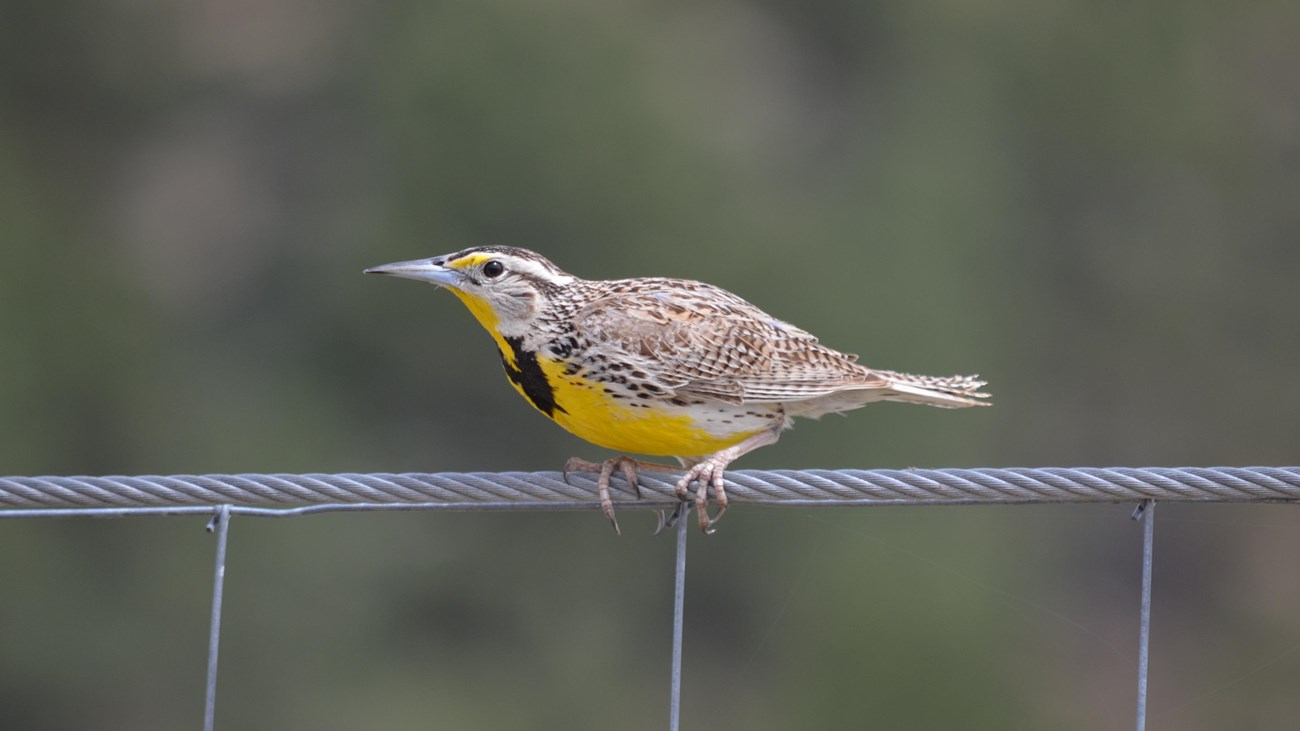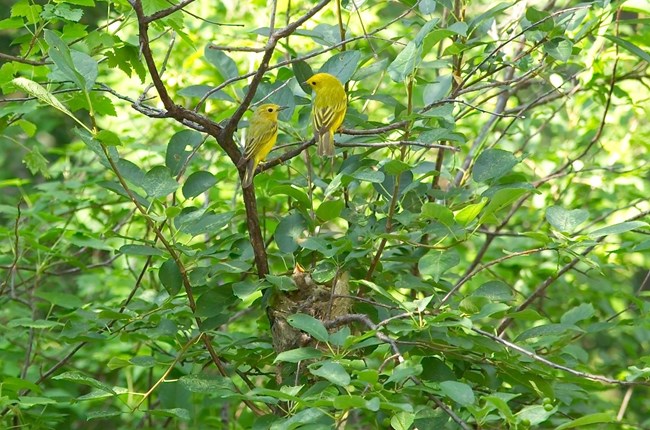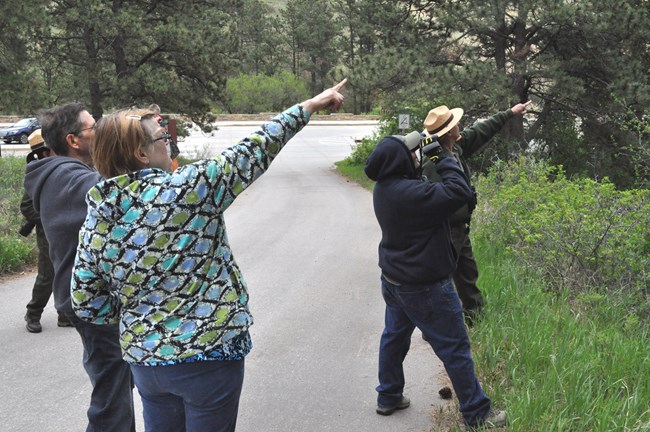Last updated: August 18, 2024
Thing to Do
Bird Watching in Wind Cave

NPS Photo
A printable species list is available at the bottom of the page.
Leashed pets are allowed in the Elk Mountain Campground, on roads and parking lots, and on the Elk Mountain Campground Trail and Prairie Vista Trail. Pets are prohibited on all other trails and in the backcountry.
Please do not bring pets to guided bird walks.
The Elk Mountain Campground trailhead has accessible parking. The trail itself is narrow and has rugged terrain and is not wheelchair accessible. The campground amphitheater across from the trailhead has a paved sidewalk and is wheelchair accessible.
What to Bring
-
Binoculars. The park does not rent or lend binoculars.
-
Wide-brimmed hat or baseball cap. During the summer, temperatures in the park regularly reach 90°F (32°C) and the weather is usually sunny.
-
Food and water. The visitor center has some vending machines but there are no cafeterias or restaurants in the park.
-
Field guide. Free park bird lists may be obtained at the visitor center. Field guides may be purchased in the bookstore.
-
Sunscreen and bug spray. In the summer, the weather is usually sunny and mosquitoes, biting flies, and ticks may be encountered in the park.

NPS Photo
Visitor Center Area
The area surrounding the visitor center is the best place to spot a large variety of bird species. The mix of different habitats attracts many smaller birds during the growing season. You may be serenaded by a western meadowlark or yellow-breasted chat while having a picnic, or hear a brown thrasher mimicking another bird's song. Cedar waxwings are often spotted flying in and out of the trees.
The Prairie Vista Trail begins and ends at the picnic area 1/4 mile north of the visitor center and provides the opportunity to view a variety of prairie birds along a one-mile loop. Both eastern and mountain bluebirds can be seen perched on fence lines. Birds of prey like golden eagles, red-tailed hawks, and Cooper's hawks soar overhead as they hunt for prey on the wing.

NPS Photo
Elk Mountain Campground
If you are camping at Wind Cave, you can bird watch without even leaving the campground! The ponderosa stands attract many forest-dwelling species. The campground is a haven for red-headed woodpeckers and northern flickers. If you’re lucky, you may see a black-backed woodpecker, which are rarely seen east of the Rocky Mountains. At night, the campground becomes a hunting ground for owls.
The Elk Mountain Campground Trail can be reached from the parking area across from the amphitheater and takes you through both open prairie and ponderosa forest. Listen for the roaring sound of a male common nighthawk as he dives to attract females in the evenings. You may also spot a tiny house wren or brightly colored western tanager among the trees.
Protecting the Park
-
Remember that all park resources - rocks, antlers, bones, plants, animals, and artifacts - are to remain as you find them. All visitors are entitled to the same sense of discovery you experience when traveling the park trails, and collecting these items is illegal.
-
While bird watching, do not leave traces of your visit. Litter is unsightly and spoils the park experience for everybody.
-
Please help keep wildlife wild and do not feed birds or other animals in the park. Feeding wildlife can make the animal sick or cause them to seek humans for hand outs in dangerous places like roads or parking lots.

NPS Photo
Guided Bird Walks
During the summer, ranger led bird walks may be offered on select mornings. Visitors will have the opportunity to join a ranger to learn the basics of birding and observe some of the park's species in their natural habitat while staying close to the visitor center. It is recommended to bring your own binoculars. All ranger programs are weather dependent.
This is a program recommended for adults and families with older children. Please do not bring pets to the program.
Please call the visitor center to check program availability: (605) 745-4600
Select a Park:
Select a Species Category (optional):
Visit NPSpecies for more comprehensive information and advanced search capability. Have a suggestion or comment on this list? Let us know.
